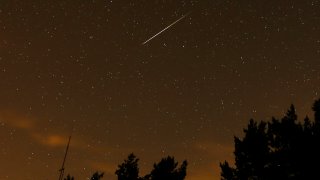
The nights are getting longer and colder, but one of the year’s best meteor showers is set to hit its peak in coming weeks, and this year’s show may be one of the best in years.
According to NASA, the Geminid meteor shower began earlier this month, and will continue until Christmas Eve.
Meteors in this shower tend to radiate from the star Castor, which is located in the Gemini constellation, thus giving the Geminids their name.
What makes this meteor shower special is that most originate from the trails of comets that have made their way through the Solar System, but the Geminids originate from the trail of an asteroid known as 3200 Phatehon, which was discovered in the 1980’s, according to NASA.
The peak of this year’s Geminid meteor shower is expected to occur during the early morning hours of Dec. 14, and that is great news for stargazers.
That is because the December new moon is set to take place just two days before the meteor shower peaks, meaning that moonlight won’t be able to drown out most of the meteors that will be visible to the naked eye.
In fact, the Geminid meteor shower is one of the most prolific of the year, spawning as many as 120 meteors per hour at its peak, according to EarthSky.
Local
Residents who want to see the show are urged to find as dark a spot as possible, then to allow their eyes to adjust for at least 30 minutes. The radiant point of the meteor shower will be at its highest point in the sky at approximately 2 a.m., according to NASA and EarthSky, so you’ll have to stay up a bit later than usual to see the show at its peak.
Even though the radiant point will be overhead, meteors could be visible throughout the sky, according to experts.
Feeling out of the loop? We'll catch you up on the Chicago news you need to know. Sign up for the weekly Chicago Catch-Up newsletter.



